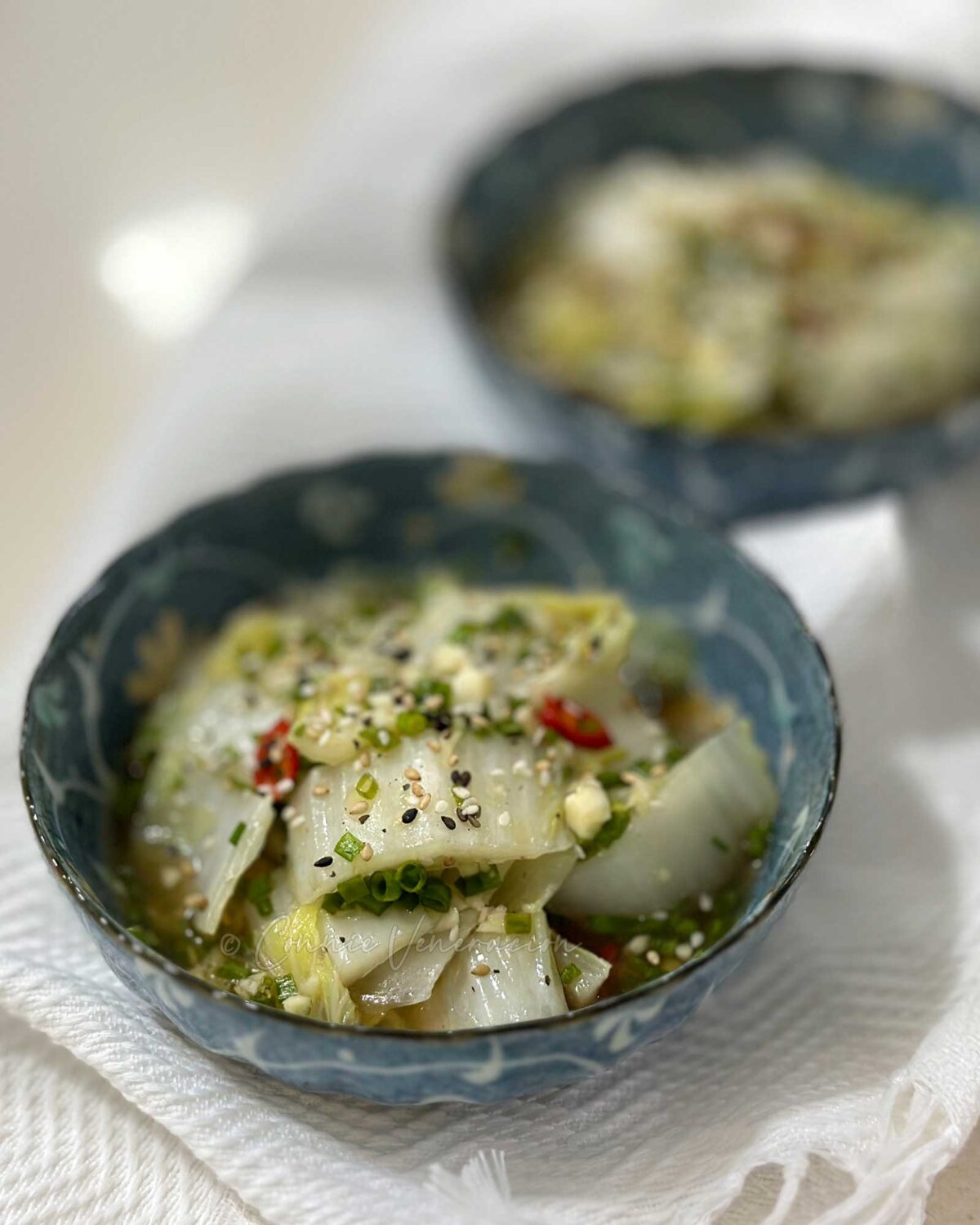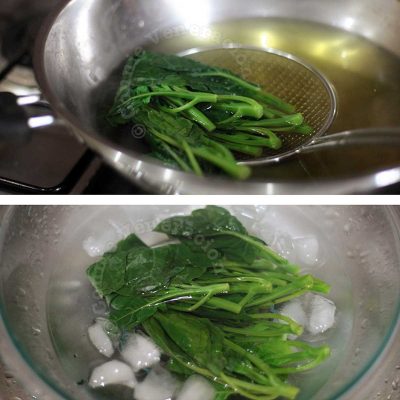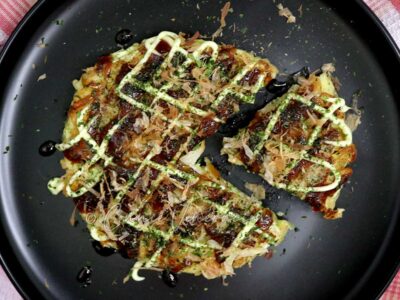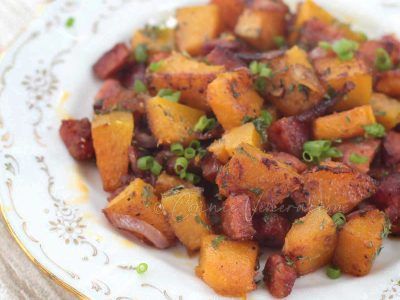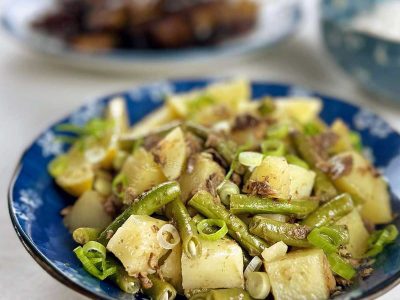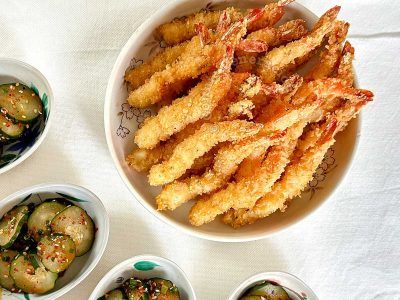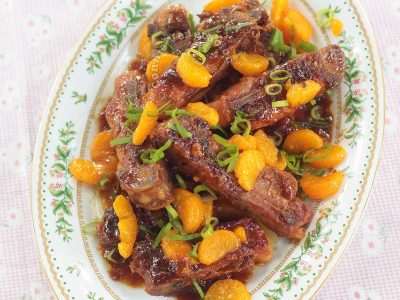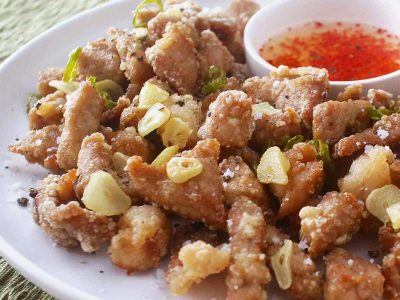It’s technically a salad because once all the ingredients have been tossed together, no additional cooking is required. We had it as a side dish but you may also enjoy it as a light snack.
What is napa cabbage?
No, it doesn’t mean the vegetable originated from the Napa region of California. It actually comes from China where it has been cultivated for centuries. Consumption of the vegetable spread through Asia. In Korea, it is the vegetable used for the most common form of kimchi.
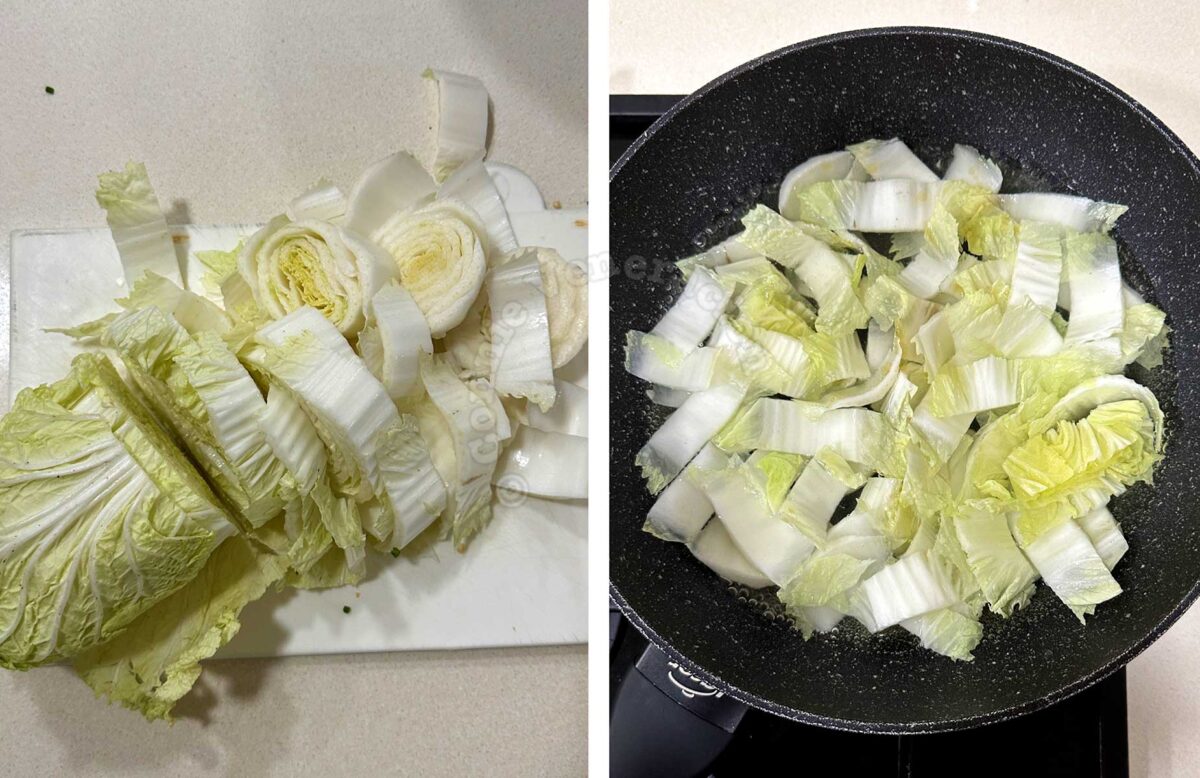
“Napa” is derived from nappa which in Japanese means leaved cooked as food. This vegetable goes by many names around the world. It’s pechay Baguio in the Philippines, wombok in Australia and New Zealand, winter cabbage in the United Kingdom, and just plain Chinese cabbage in many other parts of the world.
In this recipe, only the bottom half of the leaves are used. The top half, I cooked into a soup. Why only use the stalks for this dish? The leaves are too delicate. The stalks, meanwhile, are thicker and they retain their crunch after blanching.
What is blanching?
It means cooking in water for a short time. There is a post dedicated to the topic where blanching and parboiling are differentiated.
What is blanching and how is it different from parboiling?
Whether blanching or parboiling, food undergoes the same process — getting plunged in boiling water.
Is the dressing cooked or uncooked?
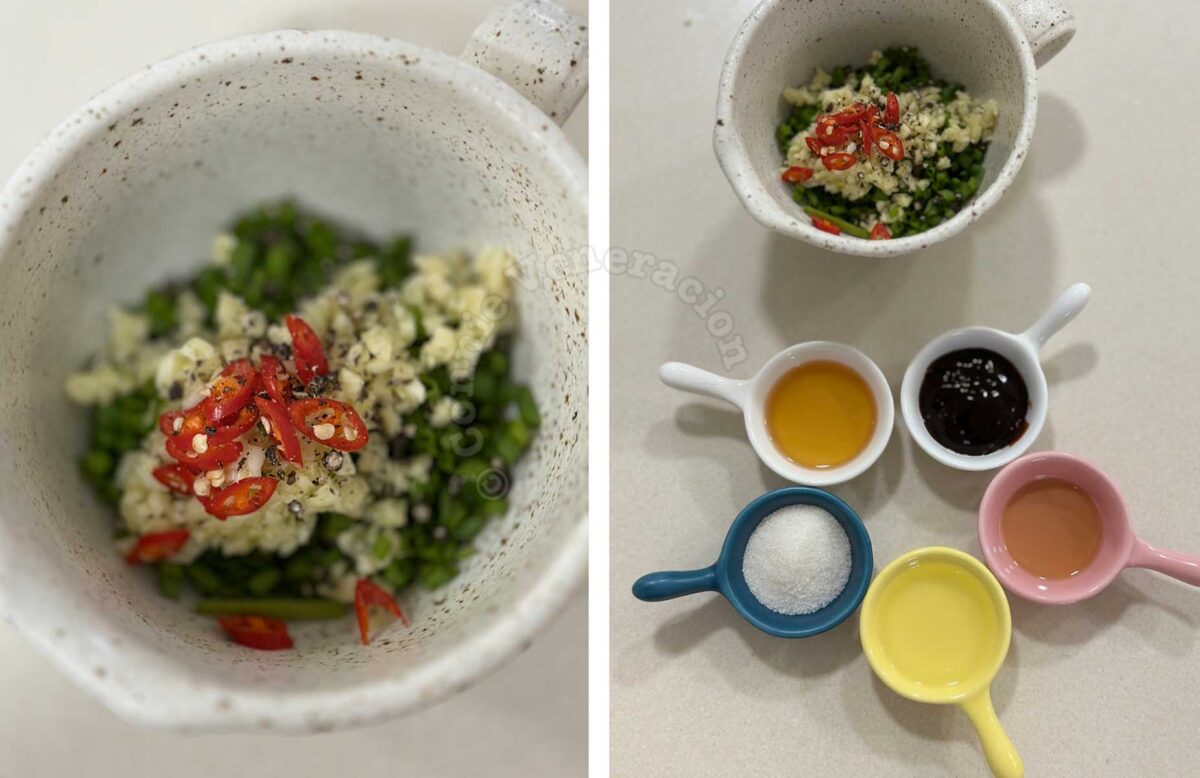
It is cooked. But it’s nothing complicated. You see, the dressing consists of two components. You have the spices on the one hand and the seasonings on the other. The spices are scallions, ginger, garlic, chilies and cracked black pepper. The seasonings are rice vinegar, sesame oil, oyster sauce, fish sauce and sugar.
The spices are uncooked but the ingredients for the seasonings are heated just until boiling then stirred directly into the spices. The sugar dissolves during boiling, and the hot mixture coaxes out the flavors of the spices when mixed in.
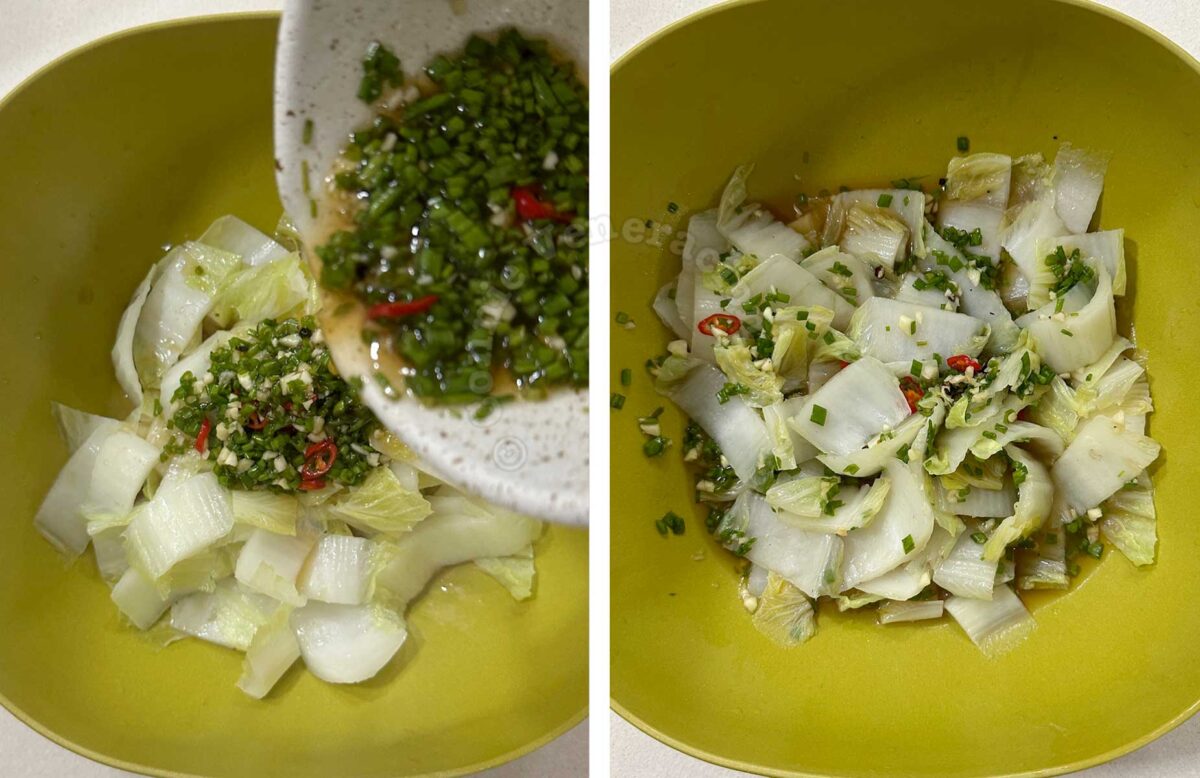
So, just place the blanched and well-drained napa cabbage in a mixing bowl, pour in the dressing and toss well. And that’s it! The blanched napa cabbage salad is ready to serve.
Blanched napa cabbage salad

Ingredients
Cabbage
- 1 head napa cabbage
- 2 pinches salt
- 1 pinch baking soda
- 1 teaspoon sesame seed oil
Dressing
- ¼ cup finely sliced scallions
- 1 teaspoon chopped garlic
- 1 teaspoon chopped ginger
- 1 bird's eye chili thinly sliced
- ⅛ teaspoon cracked black pepper
- 2 tablespoons rice vinegar
- 1 tablespoon oyster sauce
- 1 tablespoon fish sauce
- 1 tablespoon sugar
- 1 teaspoon sesame seed oil
Garnish
- 1 teaspoon toasted sesame seeds
Instructions
Blanch the napa cabbage
- Rinse the napa cabbage well to ensure there is no soil trapped between the leaves.
- Cut the napa cabbage into two portions to separate the stalks from the leaves.
- Cut the stalks into two-inch slices; set aside the leaves for another dish.
- Boil a liter of water in a pot and add the salt, baking soda and sesame oil.
- Drop in the napa cabbage stalks and cook for a minute to a minute and a half depending on how thick they are.
- Scoop out the napa cabbage stalks, spread on a rack and leave to cool.
Make the dressing
- Place the scallions, ginger, garlic, chili and pepper in a heat-proof bowl.
- In a small saucepan, stir the rice vinegar, oyster sauce, fish sauce, sugar and sesame oil and heat just until the mixture boils.
- Pour the hot mixture over the spices and stir well.
Assemble the salad
- Dump the drained and cooled napa cabbage stalks into a mixing bowl.
- Pour in the dressing and toss well.
- Sprinkle in the sesame seeds before serving.

